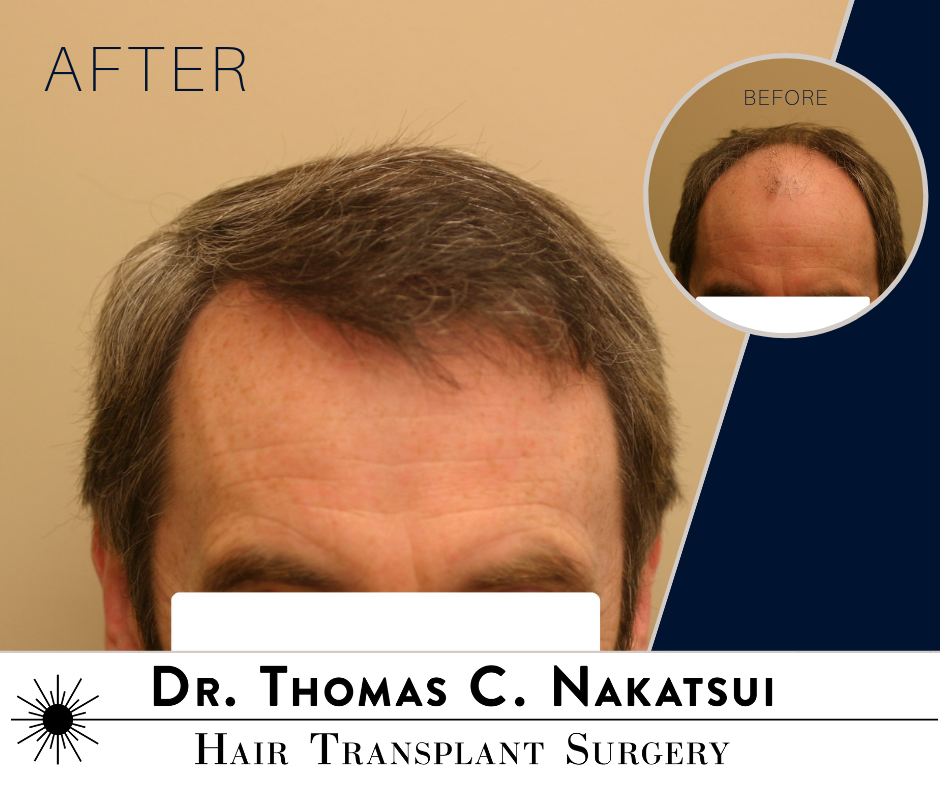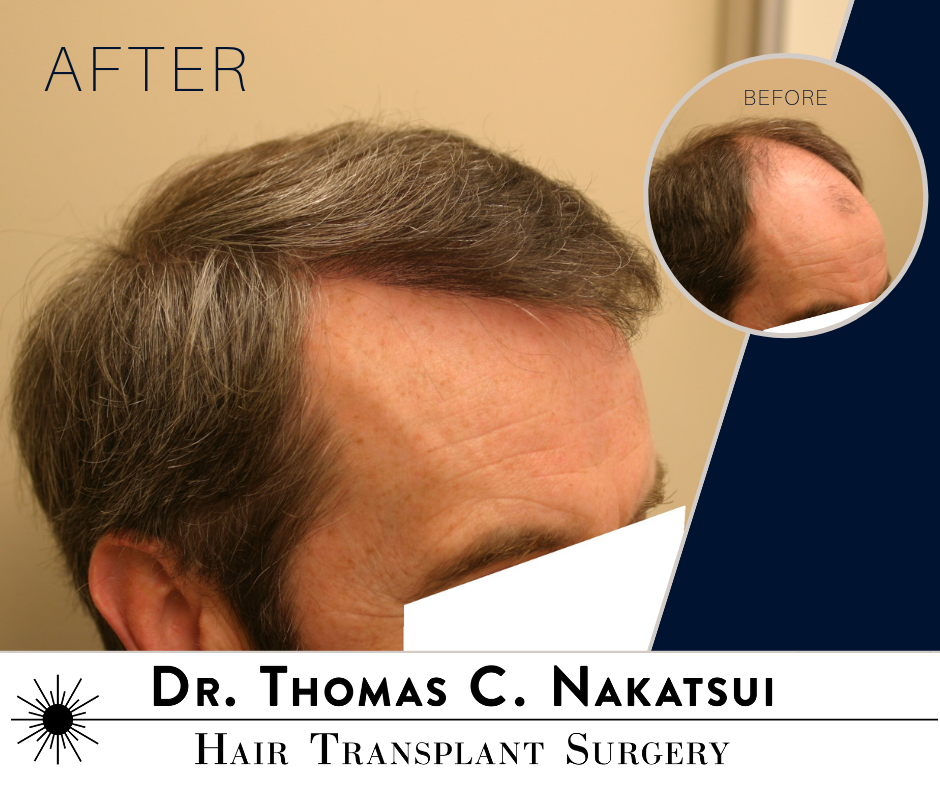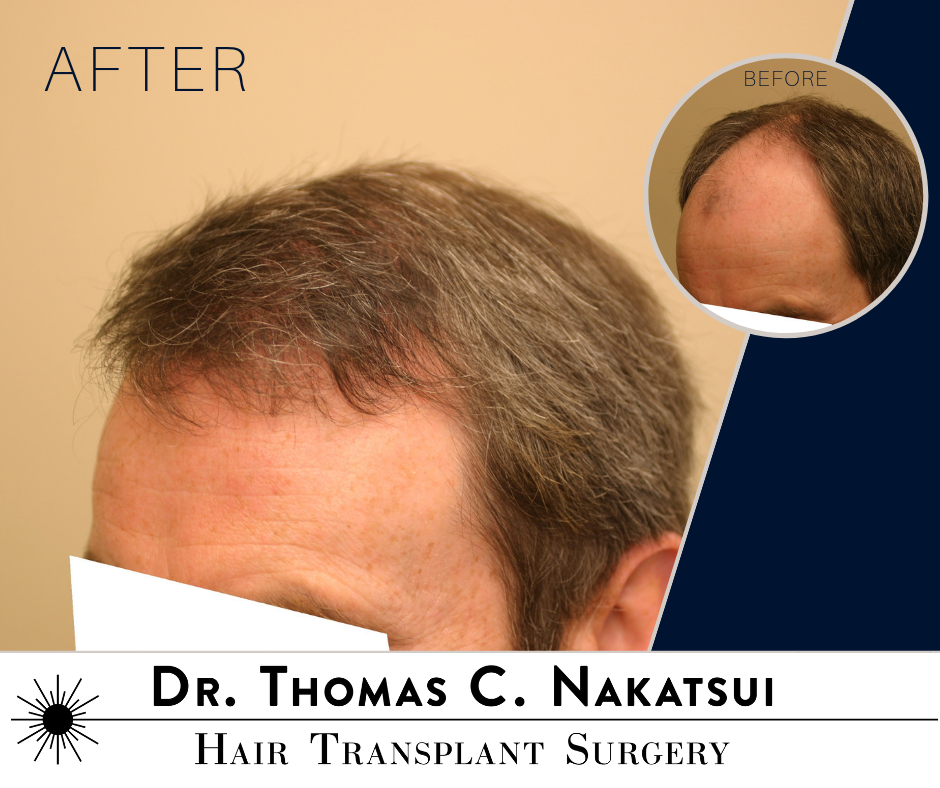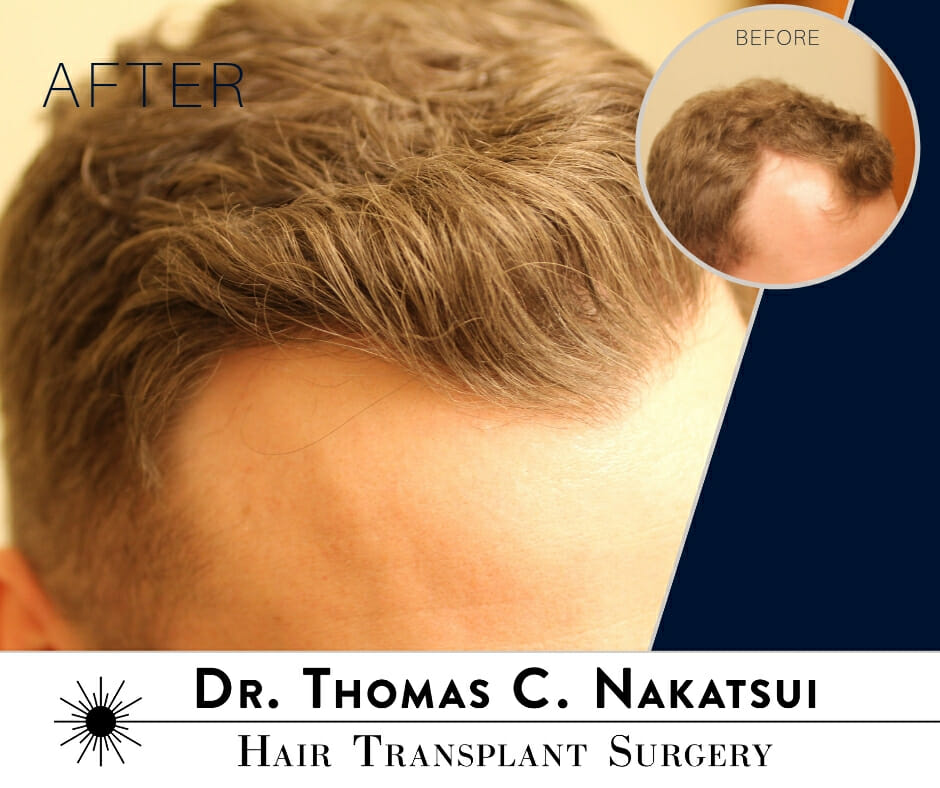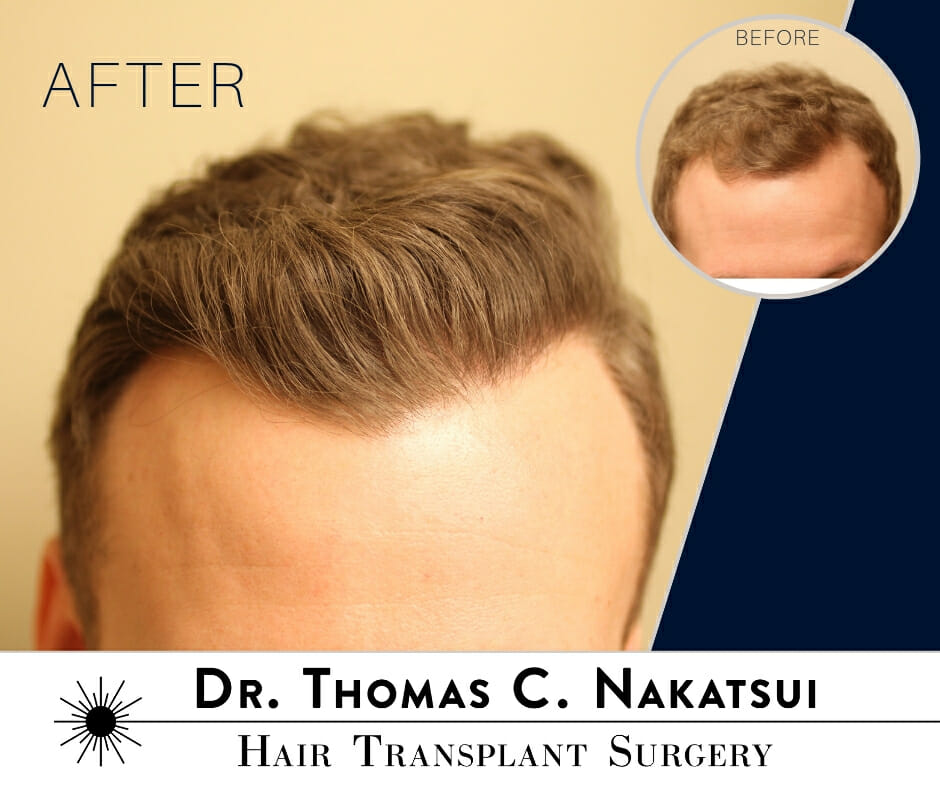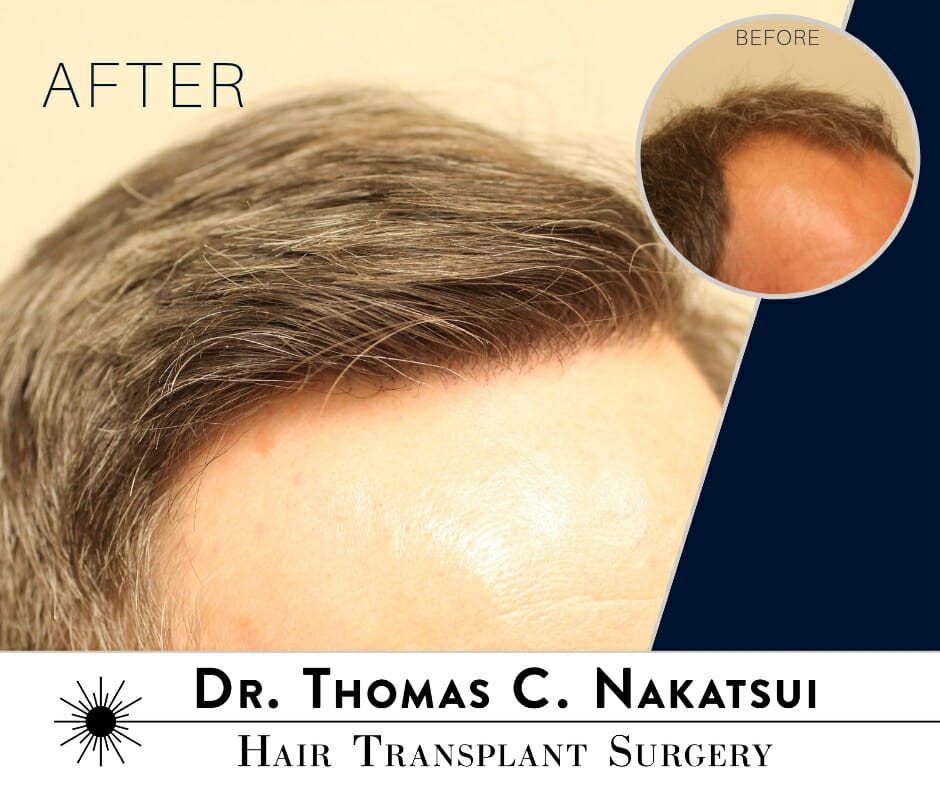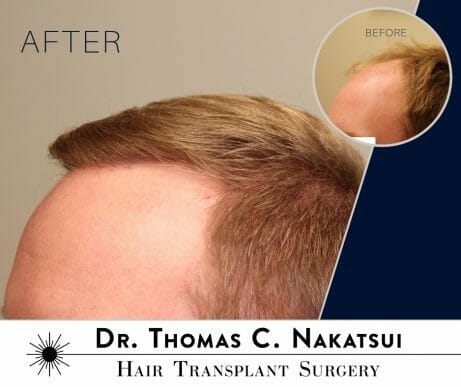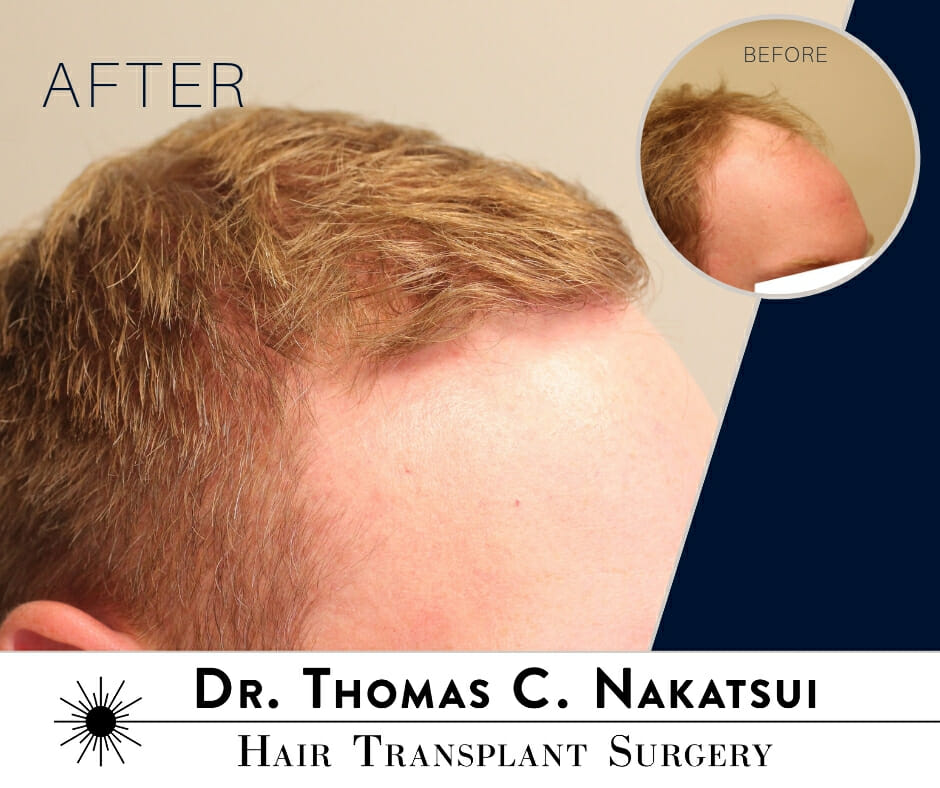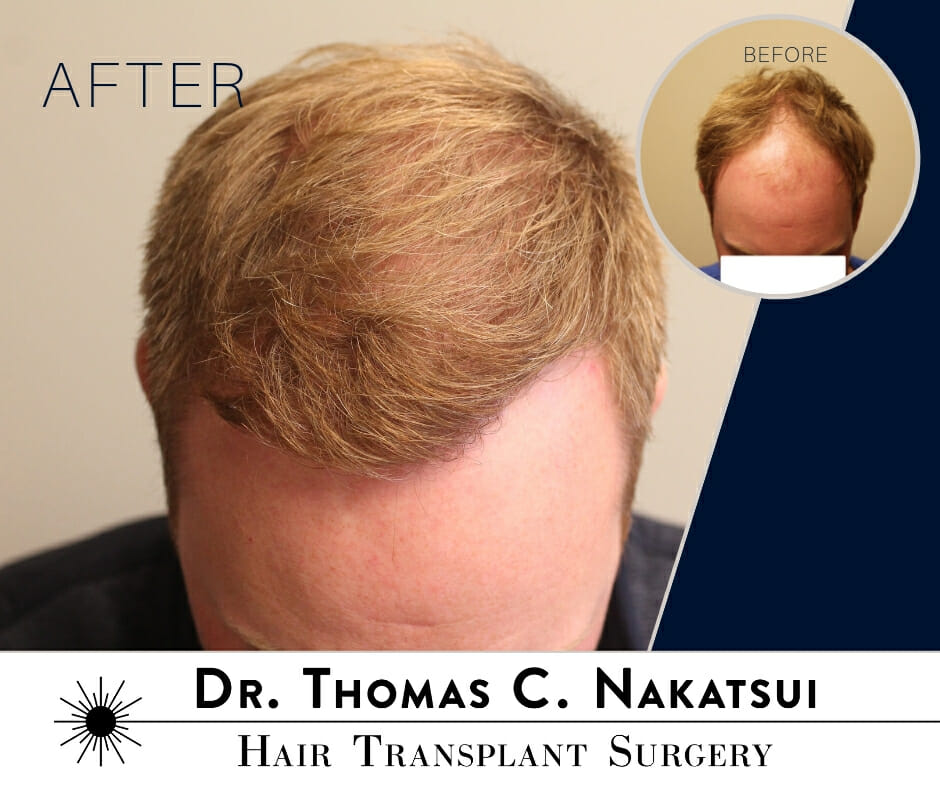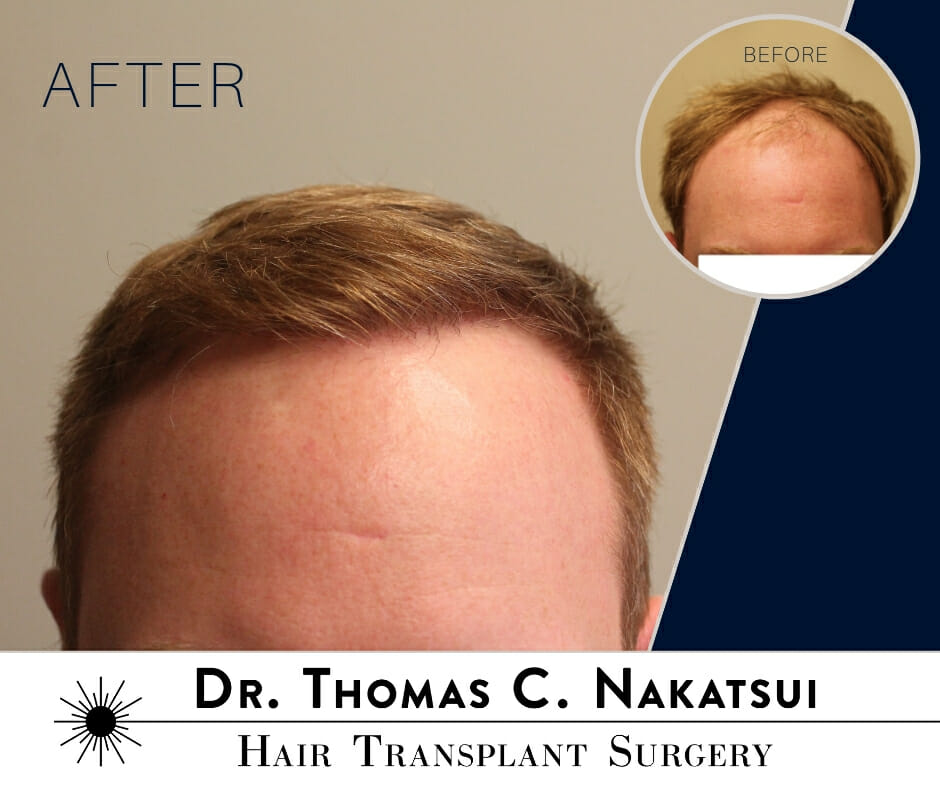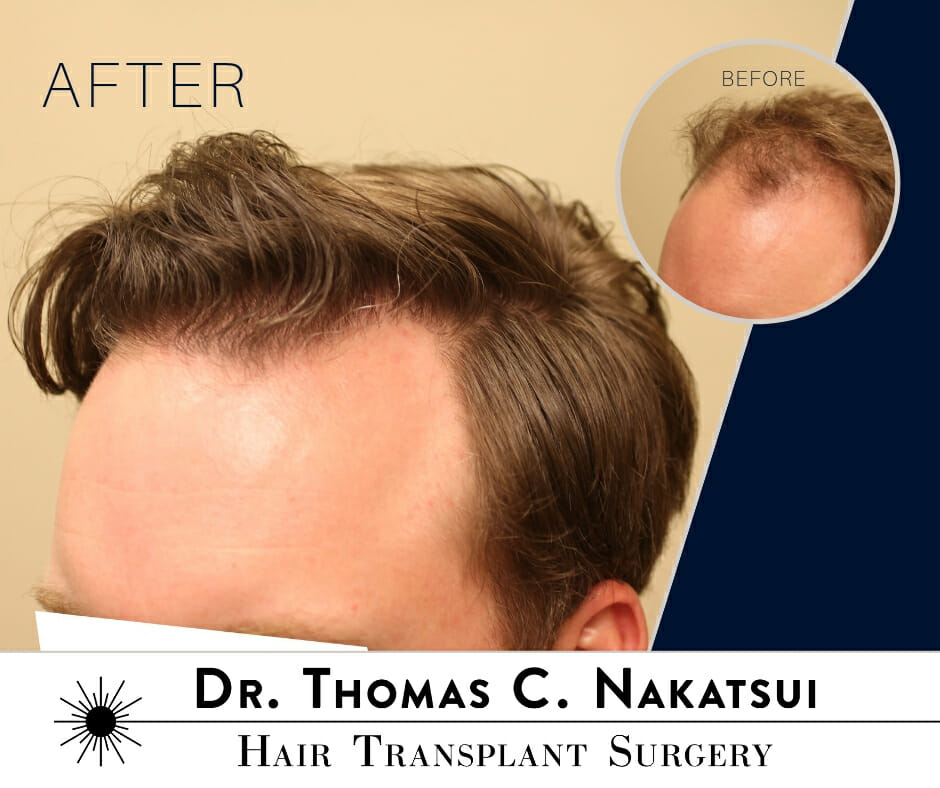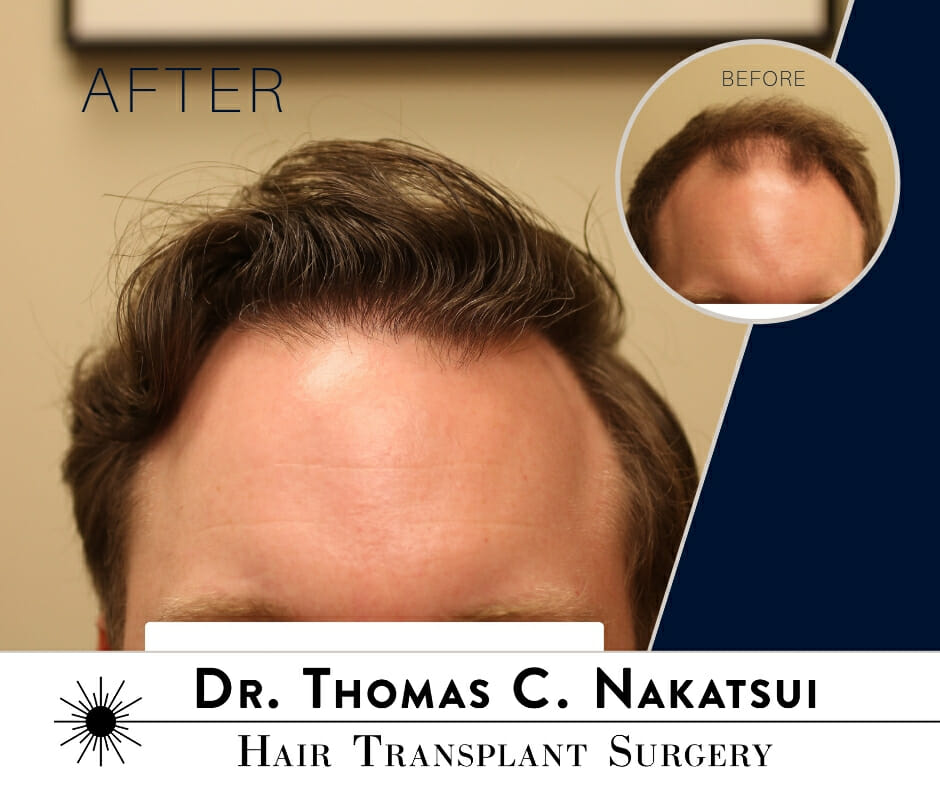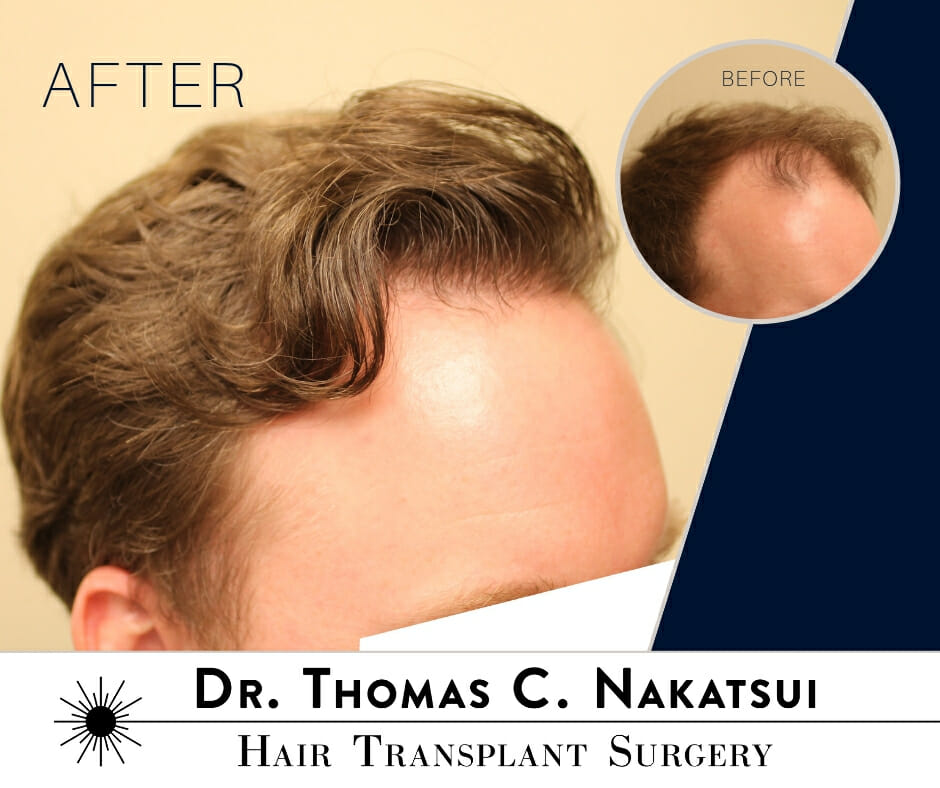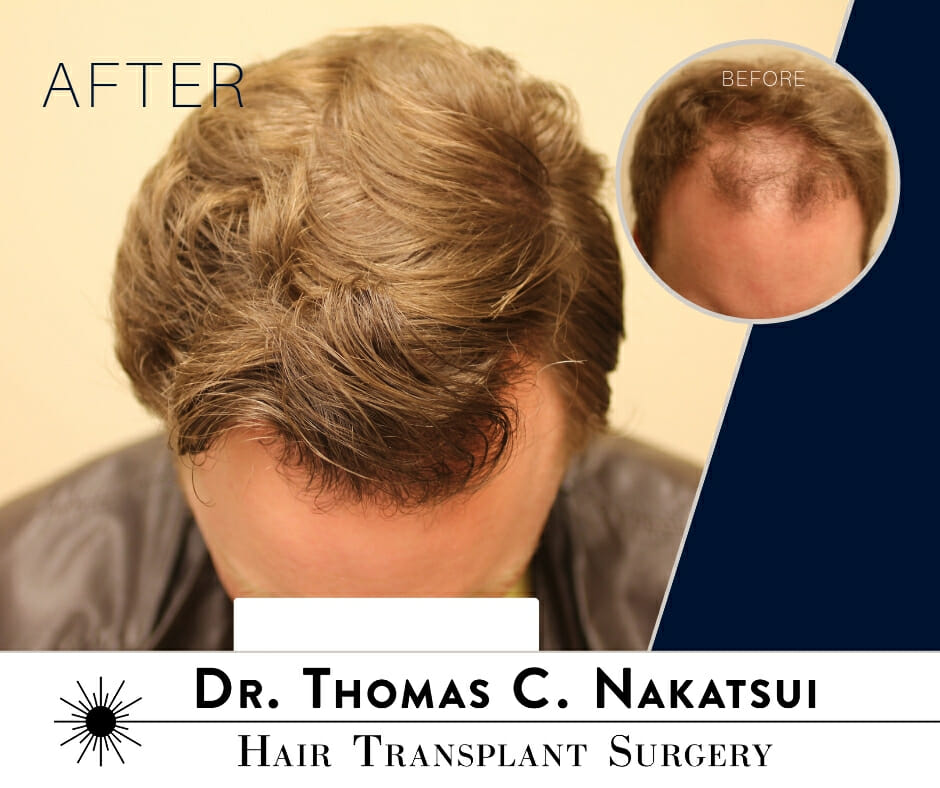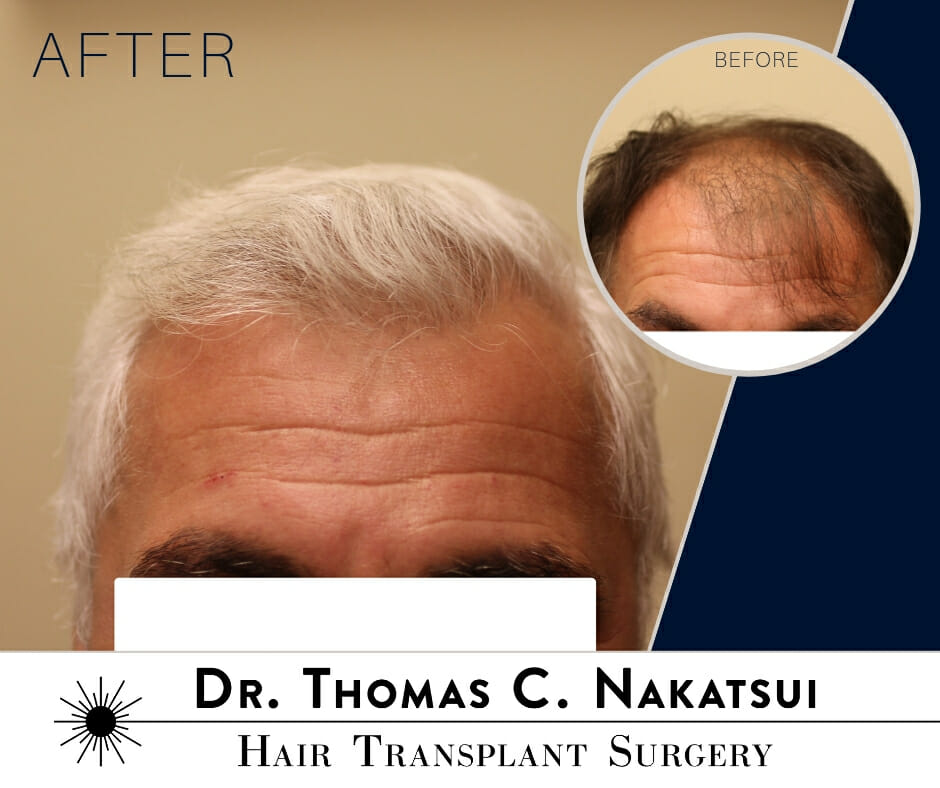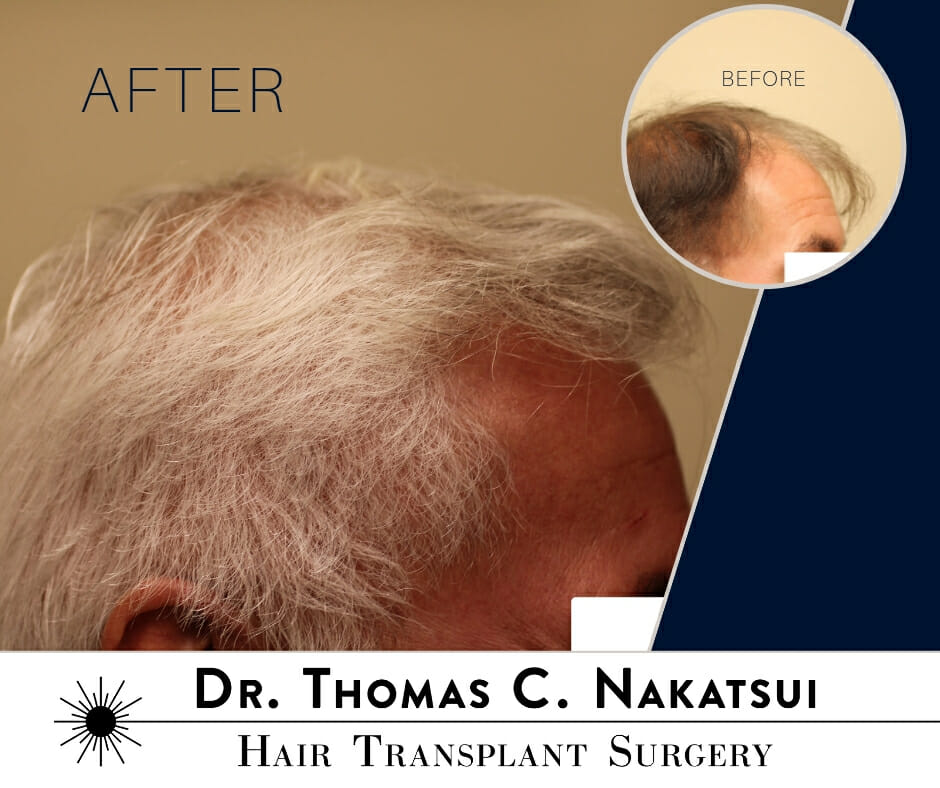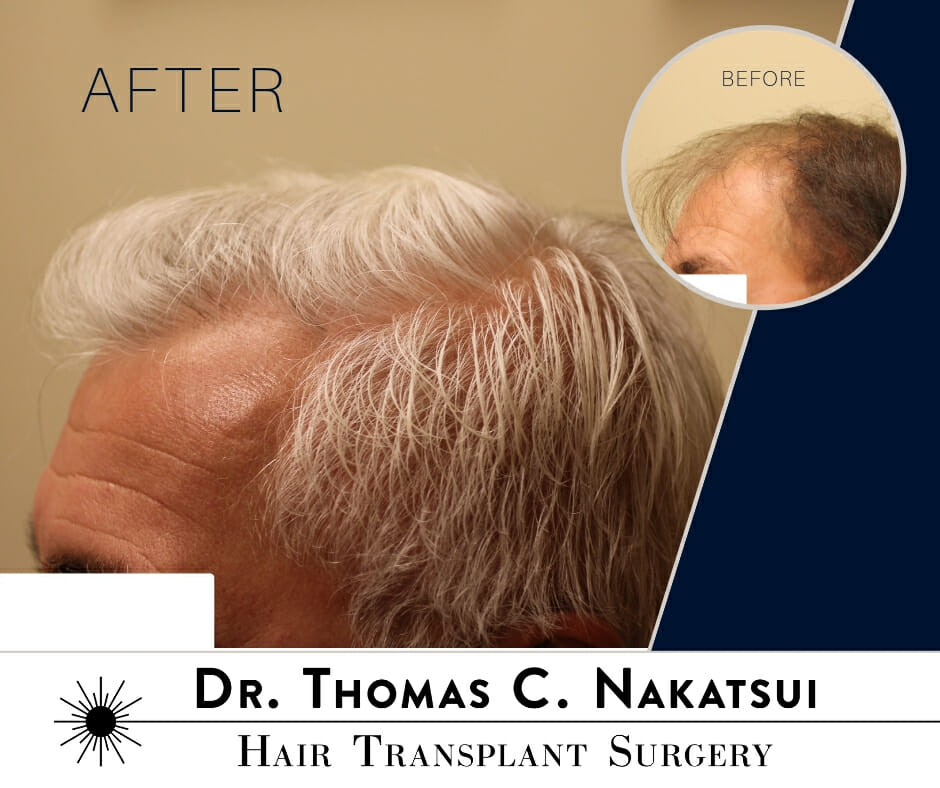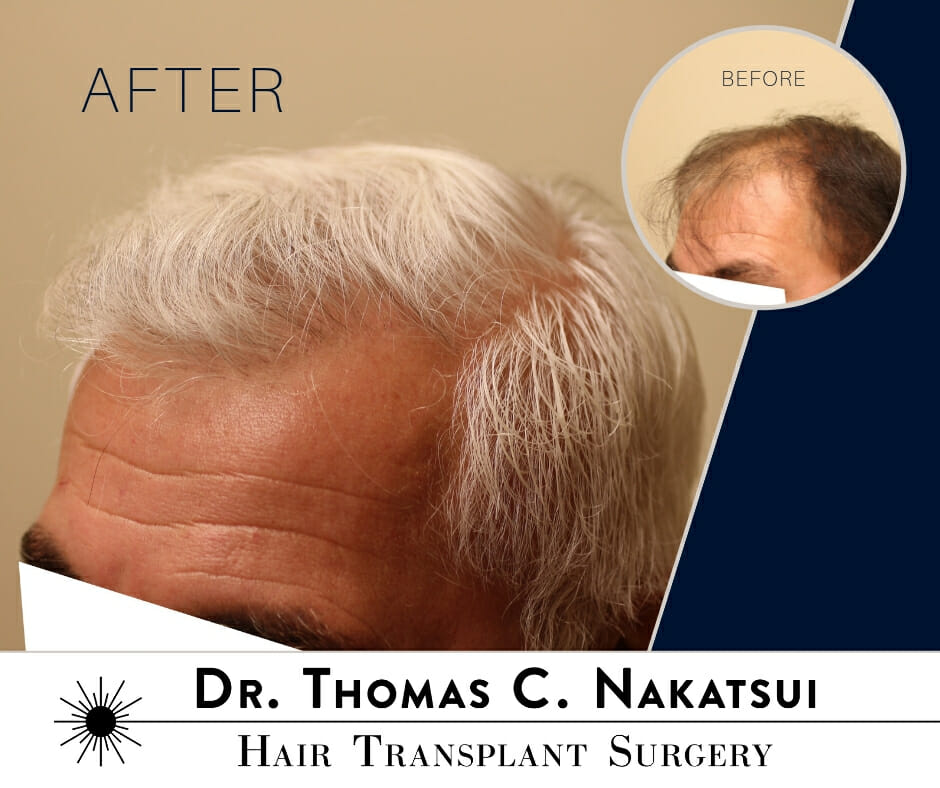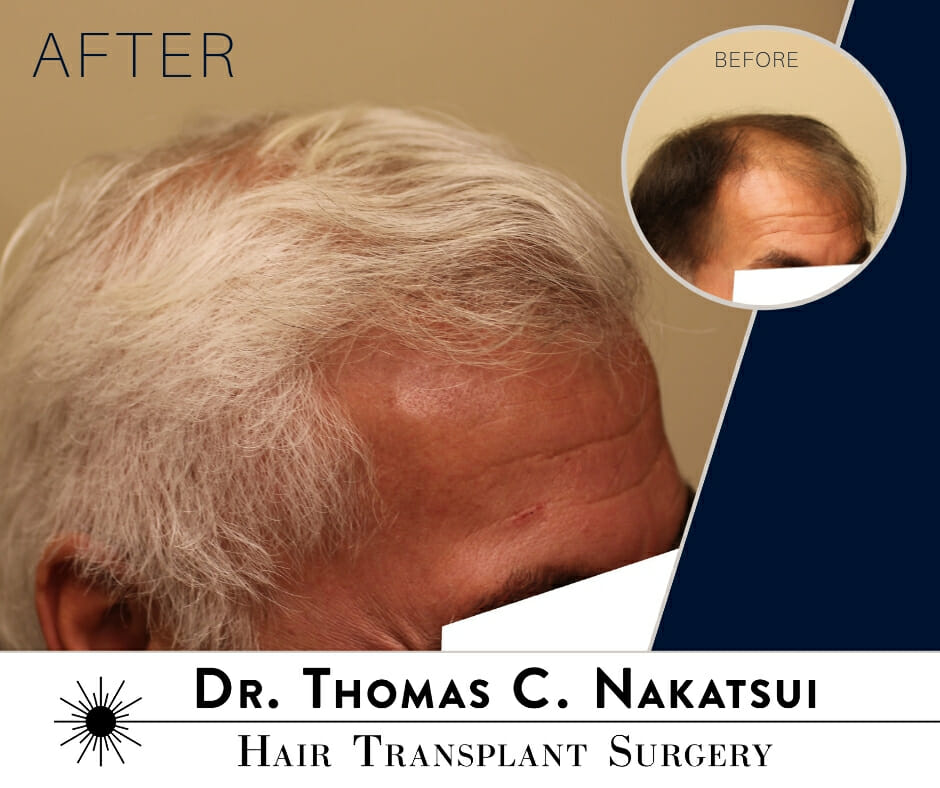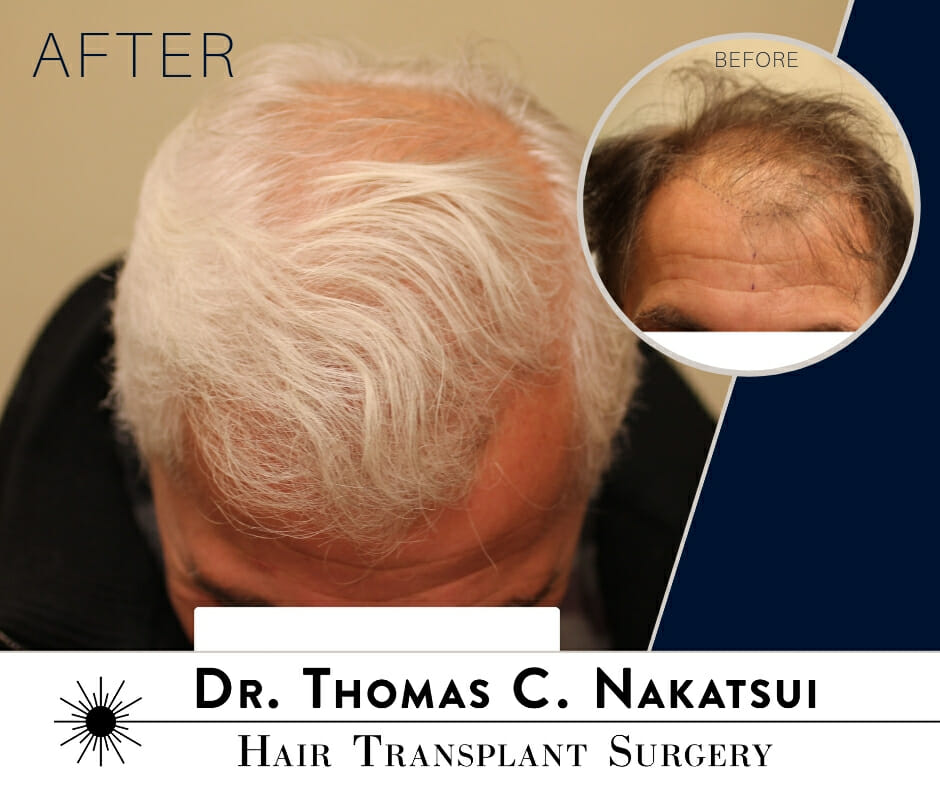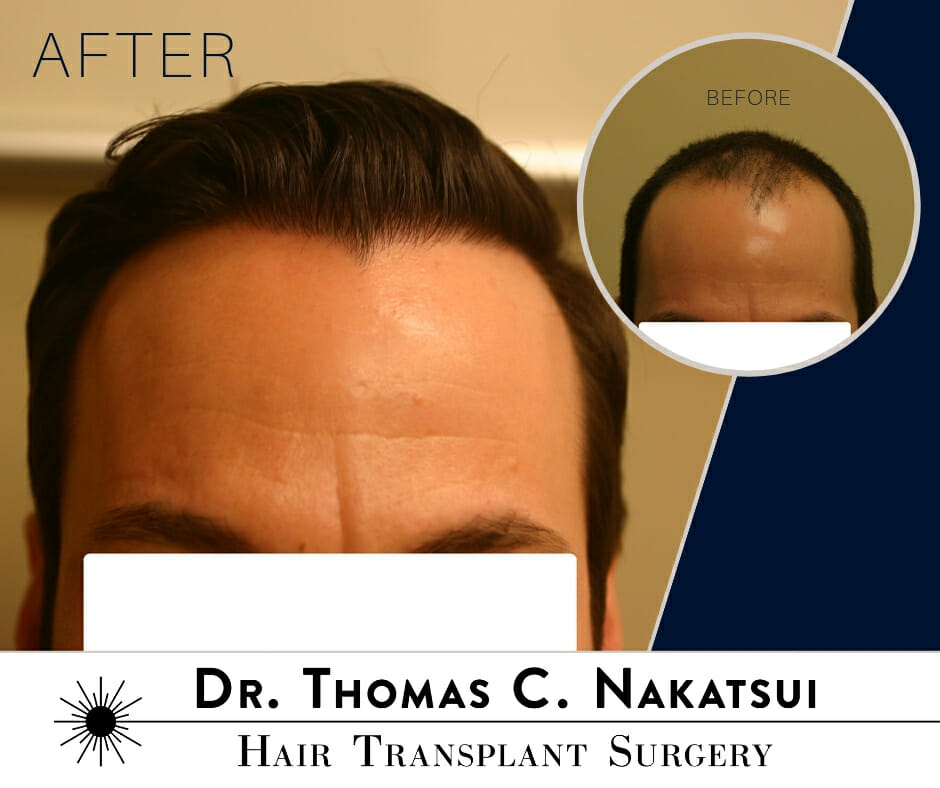2,200 Graft FUE Hair Transplant Surgery | Dr. Thomas Nakatsui
November 13, 2018Number of Grafts: 2,200
Areas treated: Vertex and temples
Number of procedures: 2
Type of surgery: Follicular Unit Excision (FUE)
This young man came to our clinic complaining of thinning to his vertex (crown) and his temples. After going through the options, he opted to have follicular unit excision surgery (FUE) because he did not want any noticeable scars on his scalp. Using the FUE method, Dr. Nakatsui transplanted 2,200 grafts into the vertex and temples.
At our centre, when a FUE surgery is performed, Dr. Nakatsui makes every tiny incision around every follicular unit graft. At many other clinics, technicians or sometimes robots perform this aspect of the procedure. Dr. Nakatsui prefers to perform this aspect of the procedure himself as the donor hair can change angle below the surface of the skin. If care is not taken and change in angle is not accounted for, the risk of transecting (cutting through) a graft increases, thereby rendering the graft unusable. Learn more about follicular unit excision (FUE) here. For more of Dr. Nakatsui’s results, please click here.
5,100 Graft Hair Transplant Surgery | Dr. Thomas Nakatsui
November 13, 20182,400 Graft Hair Transplant Surgery | Dr. Thomas Nakatsui
November 10, 20182,200 Graft Hair Transplant Surgery | Dr. Thomas Nakatsui
November 9, 2018Number of Grafts: 2,200
Areas Treated: Frontal Region
Number of Procedures: 1
Type of surgery: Strip (FUT)
This pleasant patient of ours came into our clinic with recession to the front region of his scalp. We discussed the various treatment options and the patient proceeded with a hair transplant surgery. A total of 2,200 grafts were transplanted into his frontal region for the end result.
As with any young patient with significant pre-existing hair, we always caution the risks of potential future hair loss to non-transplanted hairs. We recommended that should he proceed with a hair transplant procedure, utilising a medical treatment in addition to the surgery will greatly benefit him in the long run. Dr. Nakatsui recommended both Propecia and Rogaine 5% Foam.
This patient was kind enough to provide kind words on our Google review page and we greatly appreciate the kind words and we thank you for being a great patient!
For additional before and after results, please click here.
2,570 Graft Hair Transplant Surgery | Dr. Thomas Nakatsui
November 8, 2018
5,000 Graft Hair Transplant Surgery | Dr. Thomas Nakatsui
November 7, 2018Type of surgery: Strip (FUT)
Dr. Nakatsui and Dr. Wong at the ISHRS meeting 2018
October 22, 2018Dr. Nakatsui was recently at the 2018 International Society of Hair Restoration Surgery annual meeting in Los Angeles. He sat down with his mentor, Dr. Jerry Wong–one of the most well known hair transplant surgeons in the world. He developed the lateral slit technique and continues to make new innovations in the field of hair restoration surgery. Watch for updates as we introduce some of them soon.
Five Different Types of FUE Punches
September 25, 2018FUE is a hair transplant technique that is gaining popularity. There are many different types of punches used in the FUE hair transplant procedure and Dr. Nakatsui will choose which one is best for you. In the video below, Dr. Nakatsui goes through some of the punches he has used over the years. As did virtually all physicians doing FUE in the early days, he first started using a manual punch with a sharp, smooth edge. This penetrated the skin well but had a high relatively transection rate. The next advance was the development of the dull punch. This was again a manual punch and had the advantage of decreasing the amount of transection as the dull edge was less likely to transect a hair. This did work but had its own disadvantages, such as requiring a large amount of force to penetrate the skin in some patients.
The next idea was to use a motorized device to power the sharp and dull FUE tips. This made things easier but with the added speed of rotation came a slightly increased risk of hair transection. Even a dull punch can cut through a hair when rotating fast enough!
Subsequent to this came the development of the dull hex punch, as well as the fluted or trumpet punch, as well as the serrated punch.
Watch this video as Dr. Nakatsui discusses the different punches he has used, as well as the ones he favors currently.
Five Things You May Not Know About Finasteride
September 23, 20181. Finasteride really does work
Finasteride (Propecia) is a medication that has been used for years for the management of male pattern hair loss. It is a 5-alpha reductase inhibitor, which decreases levels of dihydrotestosterone (DHT). The pivotal studies showed significant benefit for men with respect to slowing down hair loss. In addition, a meta-analysis (an analysis of multiple studies on the same subject) by Gupta and Charrette showed that 5-alpha reductase inhibitors are significantly more effective than placebo in increasing hair counts.
2. It does have sexual side effects but it is not high risk
A very common question is about the sexual side effects of Propecia. Sexual side effects from finasteride have been well-described and include erectile dysfunction and decreased libido. However, the true risk of adverse sexual side effects remains controversial. Some meta-analyses show an increased risk and some show no increased risk. However, a recent 2018 report published by Lee et al analyzed randomized, double-blind, placebo-controlled trials (the best kind) and found 15 such trials. The data from these studies were analysed together in a meta-analysis. The relative risk was approximately 1.66. In layman’s terms, if 1 out of 100 untreated people were expected to develop sexual side effects, then 1.66 out of 100 treated people would be expected to develop these side effects. This is not a huge increase. A recent study suggests there is no increased risk at all.
3. It only works as long as you take it
I frequently get asked “What happens if I stop taking Propecia?” Unfortunately, the benefits only last as long as finasteride is being taken. Studies show that hair counts drop back to pre-treatment levels within one year of discontinuation of the medication. On the other hand, you can stop it anytime you choose. You don’t have to take the medication any longer than you want to. If you decide six months from now that your hair loss is not an issue anymore, you can stop it completely with no ill effects.
(more…)
